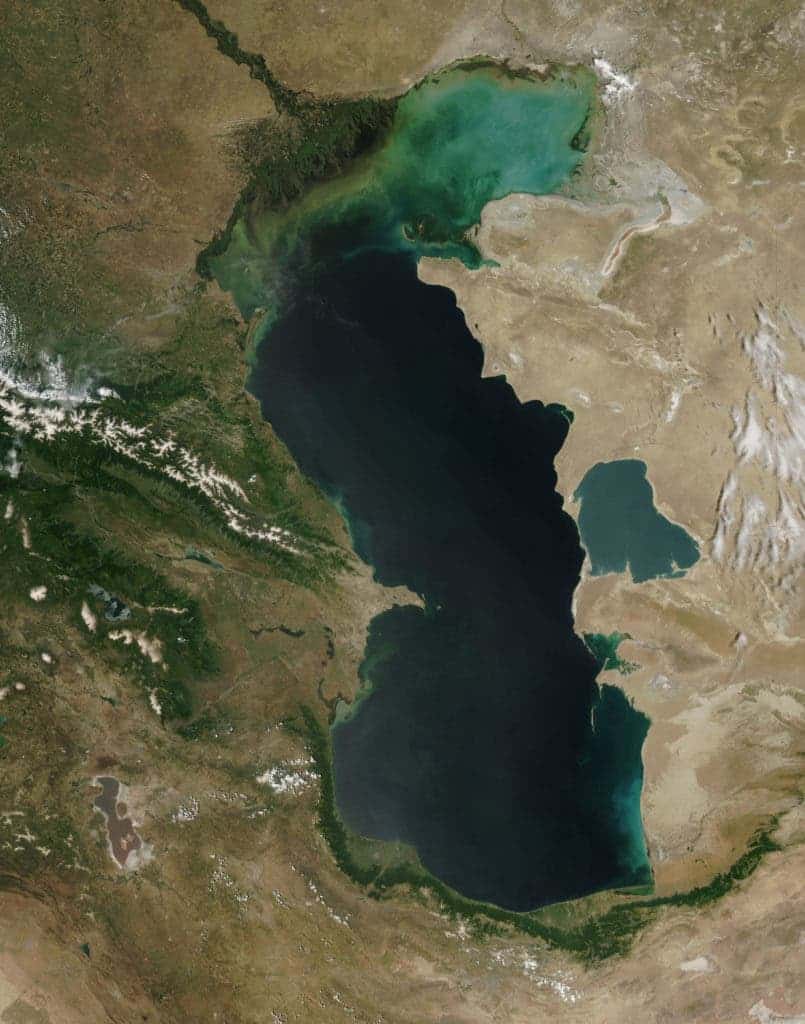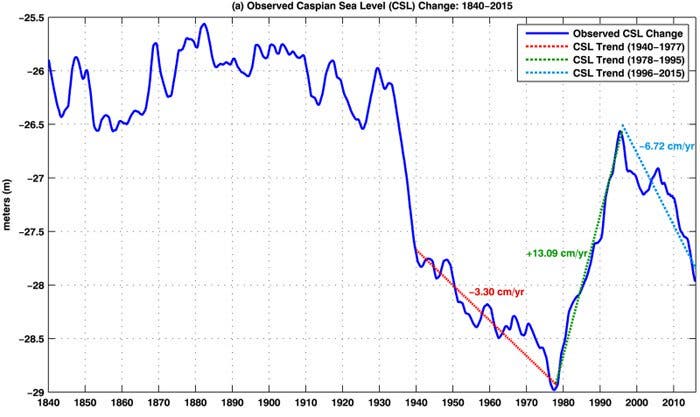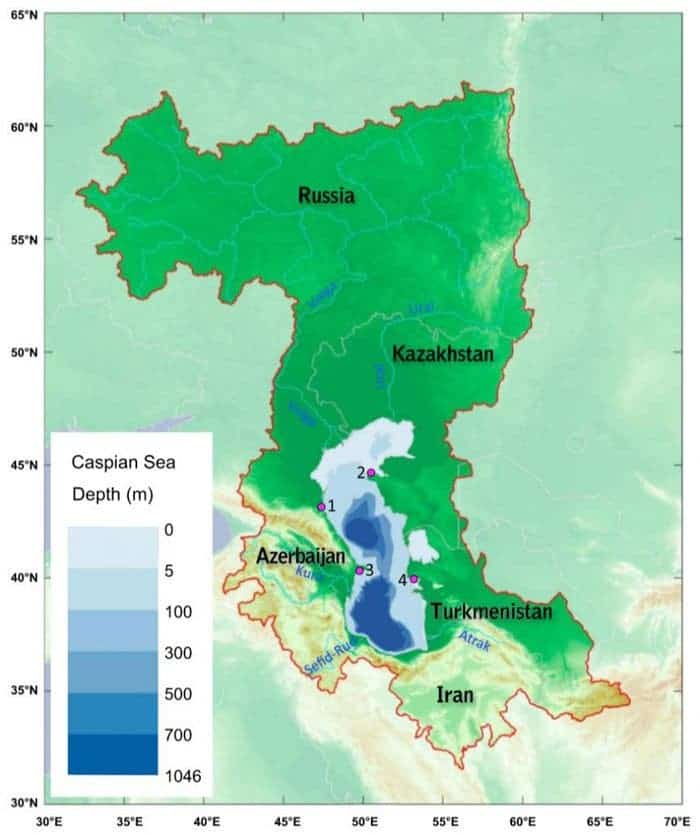There’s one place on Earth where climate change isn’t driving sea levels up: I’m talking about the Caspian Sea, the world’s largest inland body of water, which is rapidly evaporating due to the warmest climate modern humans have ever seen.

Image credits NASA / Visible Earth.
Wedged between Europe and Asia lies the world’s largest landlocked lake — the Caspian Sea. But we’ll have to redraw our maps within the century, a new study shows, as the sea has been losing almost 7 cm (2.8 inches) in water level each year since 1996. It’s all due to rising temperatures. If this trend continues (and there’s no indication that it won’t) it won’t take long before the Caspian Sea hits its lowest levels in recorded history — and then disappears completely.
Up in steam
The Caspian isn’t the most stable of seas out there. Bordered by Russia, Kazakhstan, Iran, Azerbaijan, and Turkmenistan, the sea has no link to the planetary ocean. Because of its isolation, there’s no mechanism to keep its water levels in check. A direct consequence of this is that the interplay between precipitation levels and ambient temperature dictates the volume of water it holds. As such, its waterline has seen some steep changes over time.
Lately, temperature has started gaining the upper hand in that balance. A new paper reports that hotter surface air temperatures over the Caspian (which have seen a roughly 1 degree Celsius / 1.8 Fahrenheit rise since 1979) have resulted in more water evaporating from the sea than its tributaries can supply.

Image credits Chen et al., 2017.
“The real control that causes it to go up and down over long periods of time is really most likely the evaporation, which is almost completely dominated by temperature,” says paper co-author and geophysicist Clark Wilson.
The team came upon the findings by chance. They initially set out to calibrate satellite data for the GRACE mission launched in 2002, which records gravity readings around the world. While comparing GRACE data with surface gravity measurements in the area, the team noticed just how much water levels were fluctuating in the Caspian Sea.
To understand why, the team looked at records of precipitation and drainage feeding into the sea via surrounding rivers and compared them with the satellite data. They conclude that evaporation has come to have the greatest effect on the sea’s level since 1979 – in other words, more water has been evaporating from it than the rivers can supply since then.
If temperatures in the region continue to increase, evaporation will also pick up speed, draining the sea even faster. Assuming that precipitation levels remain constant, the team estimates that the northern part of the Caspian Sea — where it is shallowest, at about 5 meters/16 feet deep — will become completely dry within the next 75 years.

Image credits Chen et al., 2017.
“If you’re going to take this [analysis of how evaporation will play out] to the next step, it would be to take a suite of climate models or look at some sort of ensemble predictions of future temperatures to get some idea of what those scenarios might be for the Caspian Sea,” Wilson says.
“You can imagine if you had a continued decline in sea level that led to several metres of loss, you’ve considerably diminished the size of the sea.”
The paper “Long-term Caspian Sea level change” has been published in the journal Geophysical Research Letters.


